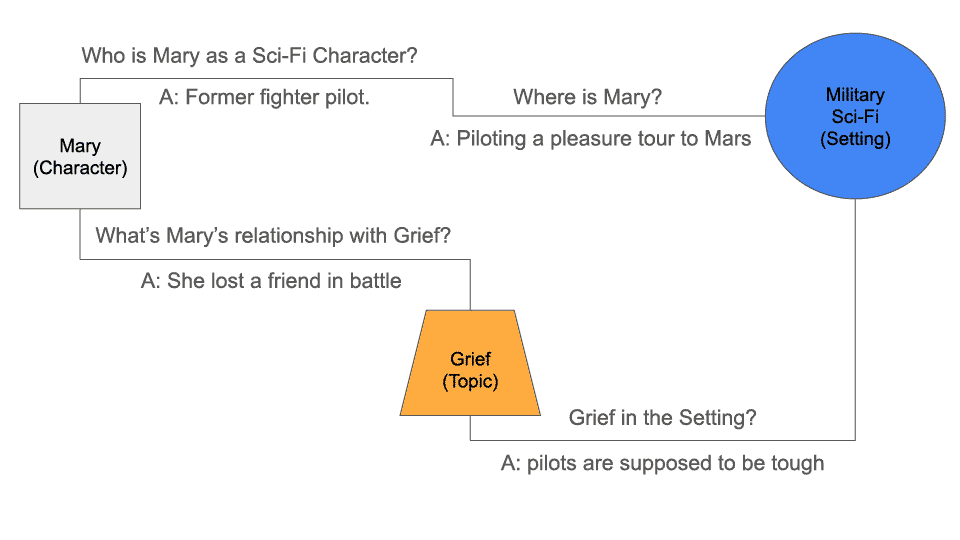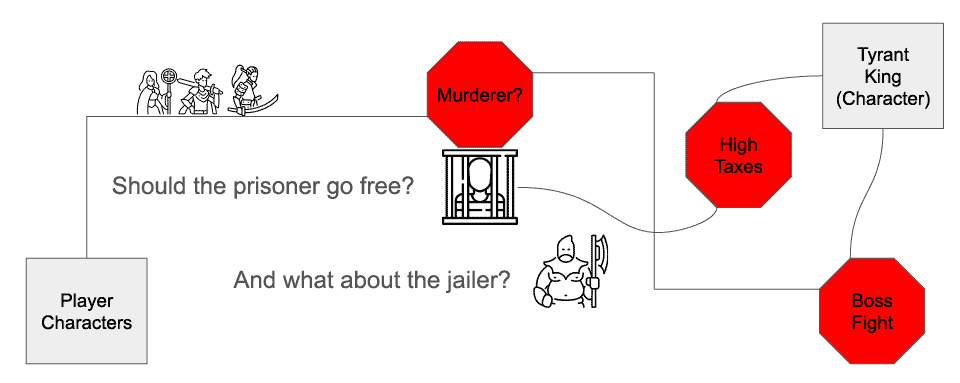Storytelling is done through every artistic medium. In creative writing (using the medium of words) you are inherently telling a story but captivating storytelling is more than just filling up a page with words that explain what happened, where, and to whom. The writer must conjure from their soul words to captivate, inspire, challenge, persuade, empower, surprise, and enchant the reader. Likewise, a painter purposely applies paint to the same end. Even an abstract splatter painting tells a story, though it might need context.
The artist chooses their words and imagery with care. Not every space need be filled with the grandiose. The audience will connect with the mundane, quiet moment between explosive action scenes. Not every space need be filled at all. Empty space itself may tell a story. Why can an artist put a blank canvas on a wall in some gentrified warehouse and receive strong critiques? Because story. That blank canvas hung with intention in a space begged for questions and opinions. Intentionality is key to what you fill the empty space with.
The Space Between Things
Frequently in storytelling, I’ll have 2 or 3 things that are already in the story or I know I want to include. Things could be characters, the setting, concepts in your premise, or literal things in your world. Every two things have a relationship even if they never interact. The question is, how does a storyteller fill in the relationship details?
Below are some examples of me riffing to fill in the spaces.

Sounds straightforward and maybe that is exactly all that needs to happen. But, more likely, that isn’t captivating for your audience to experience. I’ll add some conflict; they are all out of Egg McGuffin at the drive-through.
So Rob goes home and eats cereal. NO! Rob must get this Egg McGuffin today (the character’s want) because it is for Joan. A third thing has been added; who is Joan and what’s the deal with the Egg McGuffin and this day being important?

Joan is Rob’s wife and it’s her birthday. For all 20 years of their marriage, Rob always gets Joan an Egg McGuffin for her birthday breakfast. Rob now will drive around to all the drive-throughs desperately seeking an Egg McGuffin before he can return home. That’s an external conflict and a hint of internal conflict.

I’m starting with the character first; I think it is generally a good thing to figure out your main character ASAP. Who is Mary and what does she do as a character in this Military Sci-Fi (Setting)? She’ll be a former fighter pilot because that sounds like a cool job. She’s piloting a ship full of tourists to Mars because that sounds terrible for her but interesting for the audience.
Is Mary grieving or is she maybe helping someone else with grief? Mary lost a pilot friend during a battle so she is personally experiencing grief.
We now have Mary’s relationship with the Setting and the Topic. The last relationship in the trio is between the setting of Military Sci-Fi and the topic of Grief. I’ll say that the space military’s official stance on grief is one thing, but the fighter pilot culture treats grief as a weakness.
These answers raise brand new questions. Why is she now flying boring cruises? How has the fighter pilot culture affected her ability to grieve her friend? Answering those questions will make new questions and so forth.
A strong internal conflict has appeared; Mary wants to move on but must reconcile her beliefs and feelings. She needs to grieve. Given that this is a Military Sci-Fi, she’ll of course need to use her fighter pilot skills to save the tourists from an external threat.

We’re playing in a homebrew setting but it is, for the most part, a classic D&D setting with the standard fare. This scene is part of the conclusion to an adventure started at level 2. One of the major themes of the adventure has been to free the kingdom from a tyrant king who’s been overtaxing the subjects for many years. Think Robinhood.

I proposed that they encounter a prisoner who is begging to be released and claim to be innocent. The jailer says that the prisoner is a murderer. The prisoner says they killed a tax collector because the tax collector was taking everything they had to live on. The players know that the taxes have been unfair and have led to a lot of suffering and death. So, could killing a tax collector be justified? Were they just doing their job?
Also, the jailer might be opposed to freeing the prisoner. What do the player characters do with that? Ultimately, the DM ended up with a different non-combat challenge in the prison that better achieved what he was doing in the plot and tone.
Further Exploration
Car, characters, and prison Icons from FlatIcon.com
